To protect plants and soil, as well as structures from bactericidal diseases, various chemical compounds are used. One of the most effective means is copper sulfate. The copper ions contained in it have a high acidity, which has a detrimental effect on harmful bacteria, destroys various rot and mold.
Material Content:
- 1 Copper sulfate, description and properties
- 2 The use of copper sulfate in gardening against mold
- 3 How to apply copper sulfate from fungus on the walls, on the floor
- 4 Preparation of the solution: detailed instructions
- 5 Copper sulfate: harm to humans
- 6 Observation of safety measures when using vitriol
Copper sulfate, description and properties
It is a crystalline powder of copper sulfate. In a percentage ratio of it to water - 1: 5. It has a deep blue color. It is well dissolved in water. It has disinfecting properties. When interacting with iron, copper is released, and the composition loses its properties. It can not be prepared and stored in iron containers. Plastic or wooden containers will be suitable.
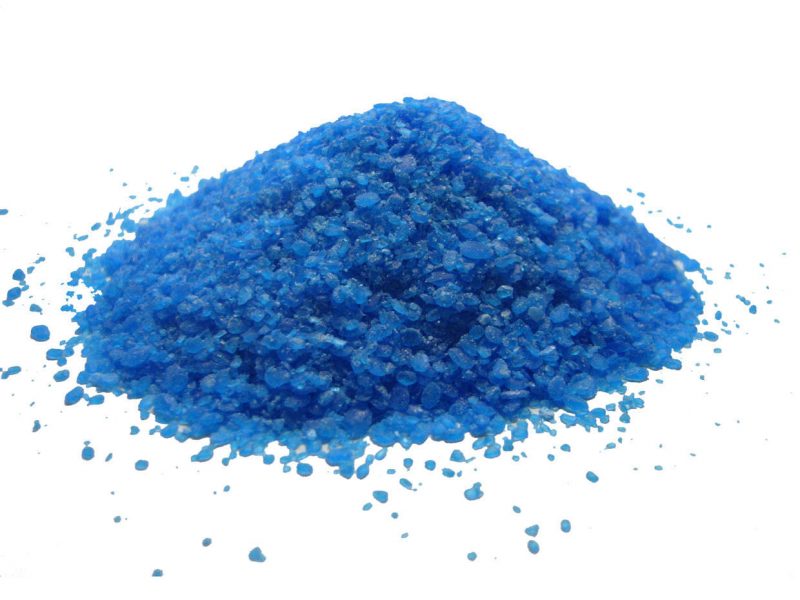
It is used in agriculture to protect plants from various fungal diseases. They are impregnated with wood, which gives it fire resistance. The processing of various building structures, especially those located in humid rooms, shows itself well.
Small doses of drugs are not dangerous to humans. Its high concentration and accumulation in soil and fruit plants cannot be allowed. The maximum allowable dose per 1 kg of products is 10 mg. In soil, its content should not exceed 1.5 g per 5 m².
The use of copper sulfate in gardening against mold
To process the garden, copper sulfate is used in spring and autumn. This is done when the plants are at rest.In the spring before budding. In the fall after leaf fall, approximately in November. Trunks and branches of trees and bushes are sprayed, tree-trunk circles are watered.
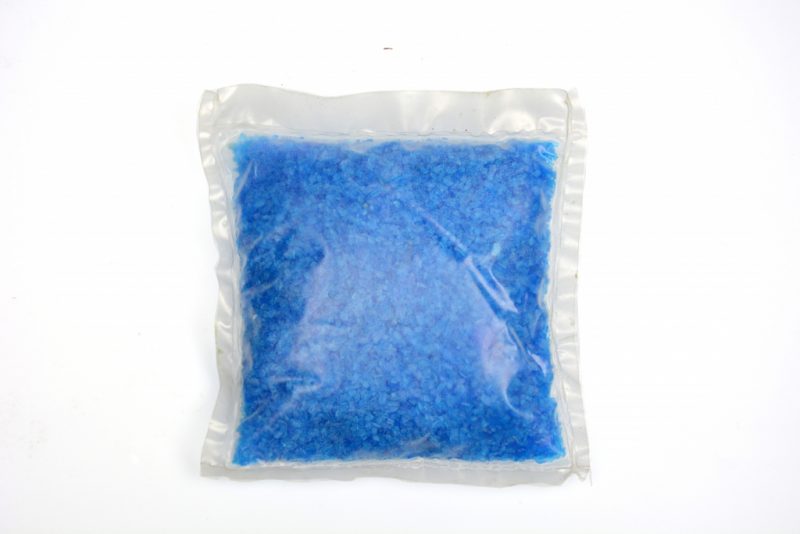
The spring composition is made of weak concentration - 0.005% or 5 g of copper sulfate per 10 liters of water. This will protect plants from rot, fusarium.
In the summer, a one percent solution of copper sulfate is used to treat plants.
Diseases that copper sulfate helps fight:
- coccomycosis.
- scab.
- anthracnose.
- gray rot.
- chlorosis.
They begin to act at the first sign of illness. This allows for a more gentle treatment of plants. Processed pears, apple trees, stone fruits, grapevine, berry bushes, vegetable crops. As part of the Bordeaux mixture destroys late blight.
The use of copper sulfate for spraying rose bushes is possible using a 0.5% solution, and for areas with strawberries, a lower concentration is made - 0.25%. To do this, 25 g of blue salt is dissolved in 10 liters of water.
Be sure to monitor the concentration of the solution, the maximum content of copper sulfate should be no more than 3%. Otherwise, you can get burns on the leaves and stems of the plant.
For each adult tree, 10 liters of composition are consumed. Tall bushes and stunted trees need to be treated with 2 liters, 1.5 liters of the prepared solution will be sufficient for the rest of the plants. For the effectiveness of spraying, make sure that the disinfectant mixture is on all parts of the plant, leaves, branches and trunk.
How to apply copper sulfate from fungus on the walls, on the floor
In addition to gardening, copper sulfate from mold is used for the treatment of wooden surfaces. Consider in detail where and how to do it.
In the apartment
Processing walls and floors against fungus in the room with copper sulfate gives a good effect. To do this, use a 1% aqueous solution. 100 g of crystalline powder is dissolved in 10 liters of warm water, 30 ml of vinegar 9% is added. The working staff is ready. Next, get to work.

The surface is being prepared - wallpaper, paint or plaster is being removed. Walls and floors are washed with soapy water and allowed to dry. Using a sponge, brush or spray, apply the composition to the surface that needs to be treated. The solution dries within 4-5 hours. Especially neglected areas are treated up to 4-5 times.
The use of copper sulfate on the walls of the fungus does not eliminate the cause of its occurrence. So that it does not appear again, it is necessary to exclude the conditions that cause it.
In the bath
A bathhouse is a room where high temperatures alternate with long cold periods. So that there is no constant increased humidity, and mold does not appear, after use the bath must be carefully ventilated.

If mold still appears, you can use various means to eliminate it. Copper sulfate is the easiest and most inexpensive material for processing against mold. Having prepared the solution in the same way as for processing the walls in the rooms, they begin to cover them with walls and floors in the bathhouse.
The number of layers depends on the stage of the disease. The maximum allowed application of the solution five times. Each coat must dry before applying the next. After processing, dry and ventilate the bath for a week.
If the fungus appears on the floor, raise the floorboards and check the state of the underground. Bulk soil needs to be replaced with fresh. If a cement screed is arranged under the floor, it should be washed, dried and treated with the same composition.
In the basement
When molds appear in the basement, they are thoroughly processed. First, they carry out all the wooden structures, boxes. It is better to burn them, so as not to contribute to the growth of mold.
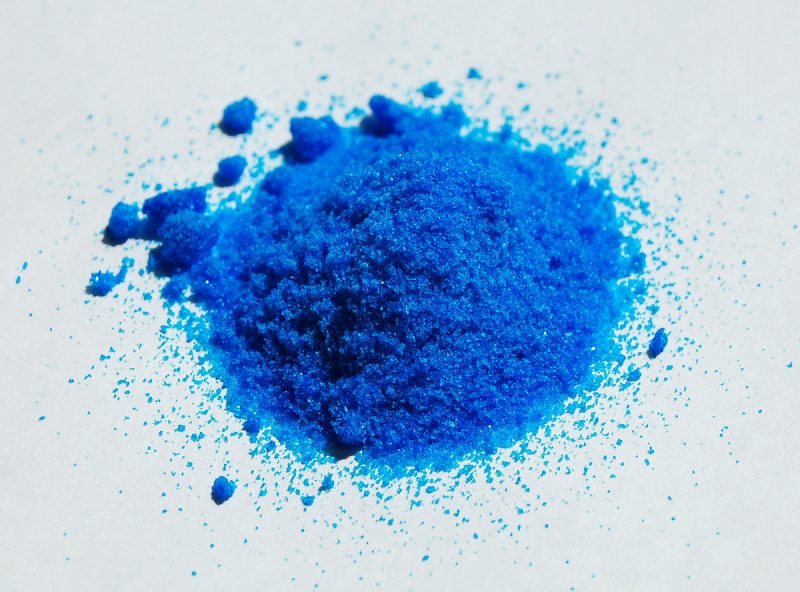
To clean all surfaces from a fungus. To do this, use sandpaper or sharp tools, a grinder. Walls, floors and ceilings are washed with soap and water. The room is dried.For work, they use dry, warm weather, provide ventilation of the basement so that everything dries faster.
Using the prepared 1% solution of copper sulfate, we process the surfaces with a brush. Repeat the process at least five times. After drying and airing completely, the basement room is ready for further use. Walls can be plastered or whitewashed.
Preparation of the solution: detailed instructions

Consider how to prepare the aqueous composition of copper sulfate in the example of a 1% solution:
- We use non-metallic dishes with a capacity of 12-14 liters.
- Pour 100 g of copper sulfate powder into the dishes.
- Pour in 500 g of hot water, with a temperature of about 50 0C.
- Mix the solution thoroughly with a wooden stick or spatula until dissolved.
- Add 9.5 liters of water at the same temperature. Mix again.
- Filter the solution.
In the future, the resulting solution is used as intended. For spraying plants, we use a sprayer, for surface treatment you can restrict yourself to a brush or sponge.
Copper sulfate: harm to humans
Copper for humans is an essential mineral in the body. However, exceeding the permissible dose causes a number of negative processes that pose a threat to life.
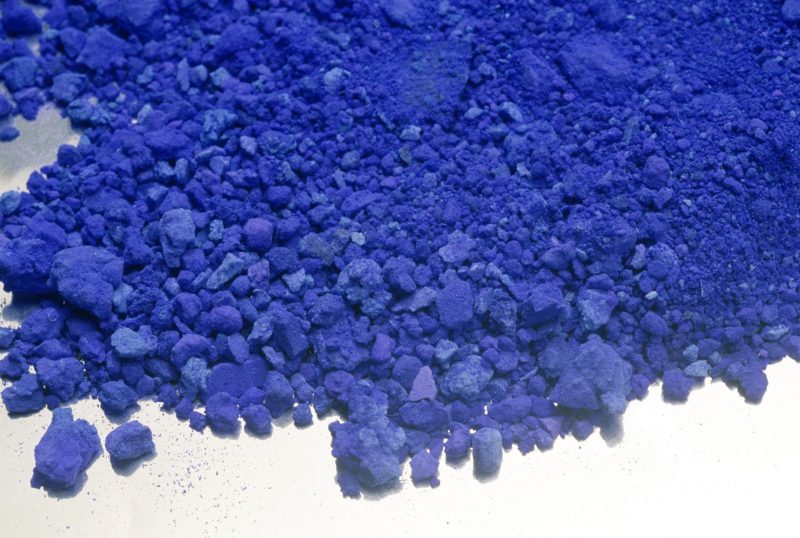
The toxicity of this compound is small, it belongs to the 4th hazard class, however, it has the following effects:
- In case of skin contact, there is no great danger; it is important to rinse it quickly with running water.
- Burns may appear on the mucous membrane of the eyes from exposure to the solution. Rinse thoroughly with plenty of water. In the future, it is better to visit a doctor.
- An acute toxic dose when swallowed is 0.5 g, and when inhaled, 11 mg / kg.
- The lethal dose of copper sulfate when swallowed, depending on the age and weight of the person, is 45-125 g.
Observation of safety measures when using vitriol
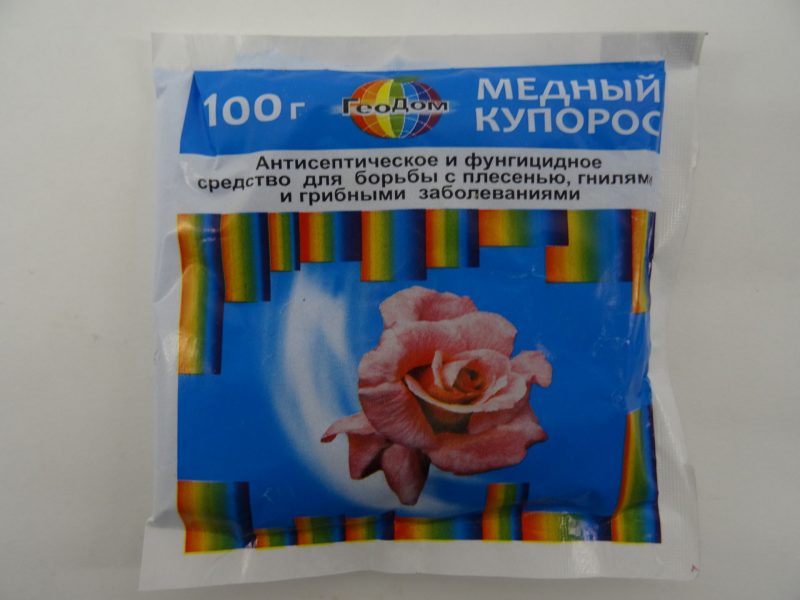
As with any chemical, caution should be exercised in contact with copper sulfate, namely:
- Be sure to use protective equipment - boots, gloves, glasses, closed clothing.
- Do not use metal containers for solution preparation.
- Do not spray plants in windy weather.
- When processing walls and floors in the room, provide good ventilation.
- Do not exceed the required concentration of the solution when spraying plants.
- Dispose of packaging from copper sulfate salts, used gloves and more.
- If the drug enters the respiratory system or inside a person, take first aid measures, and then consult a doctor.
- Do not use fruits and vegetables treated with the drug before the time specified in the instructions on the package.
Copper sulfate - a simple and cheap preparation for the destruction of mold and fungus on plants and building structures, will serve well when following the instructions for use. It is even more important to comply with the conditions in order to prevent the appearance of diseases and pests.












